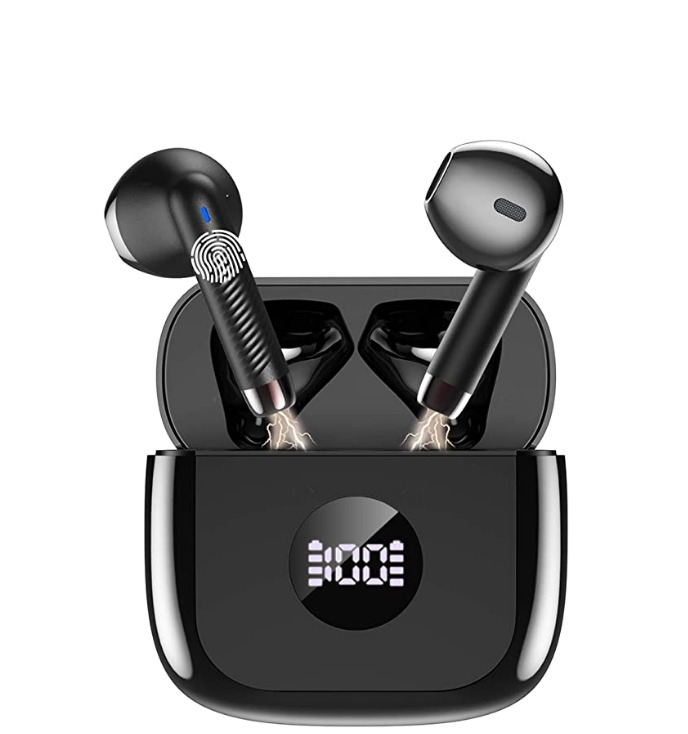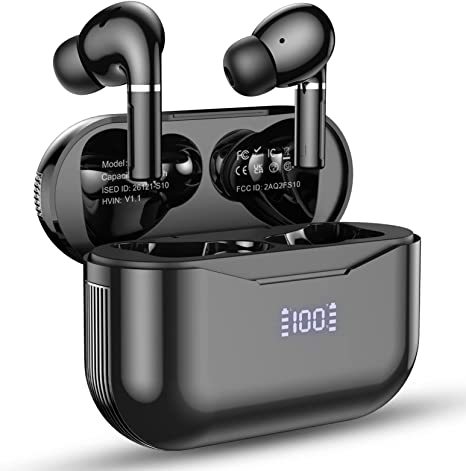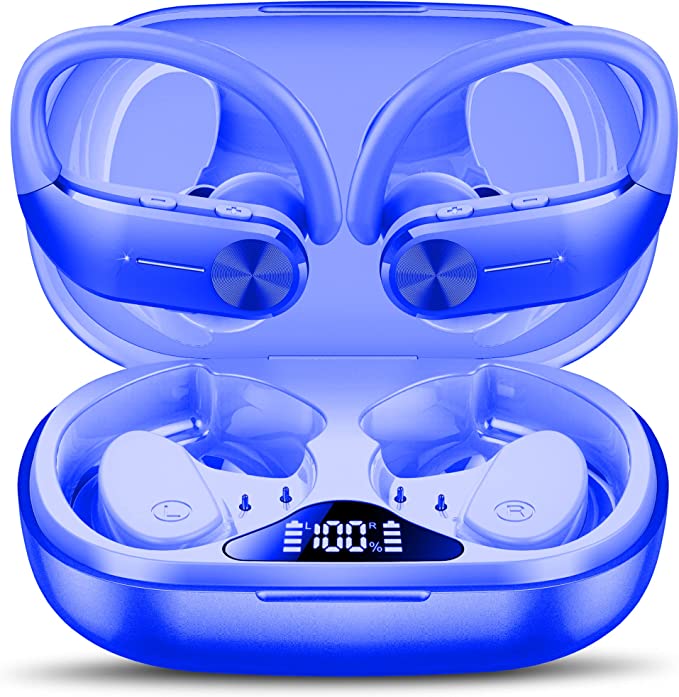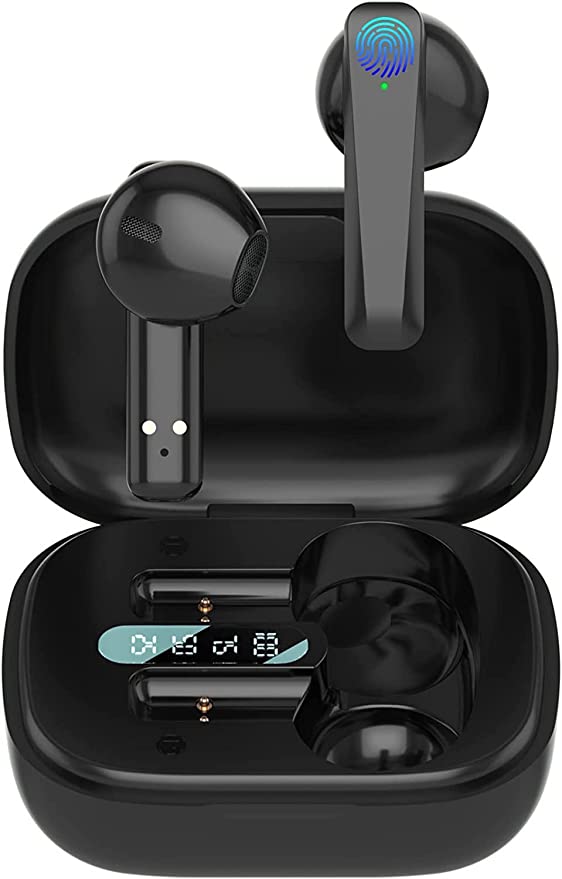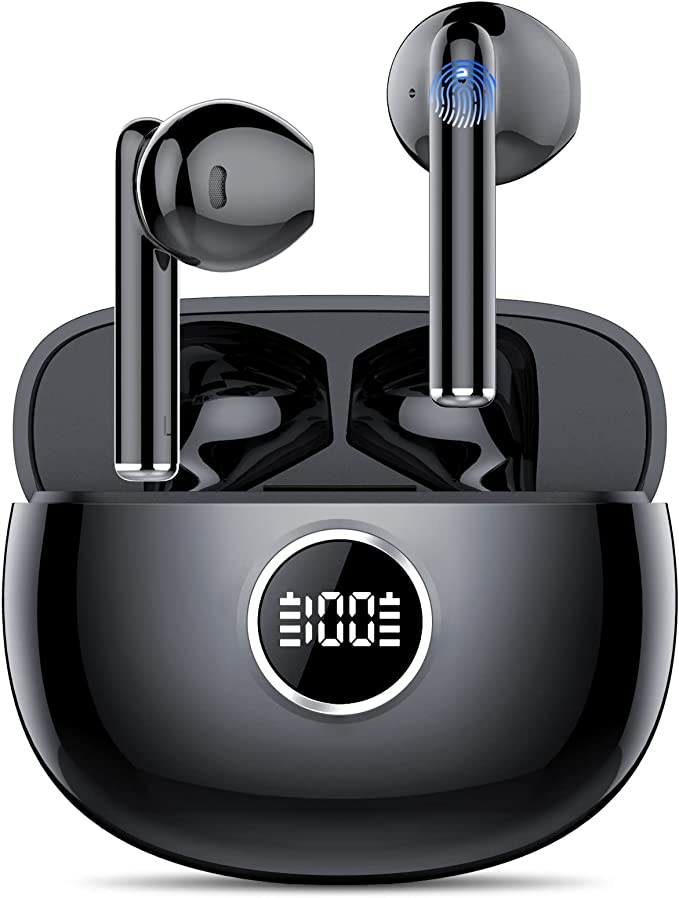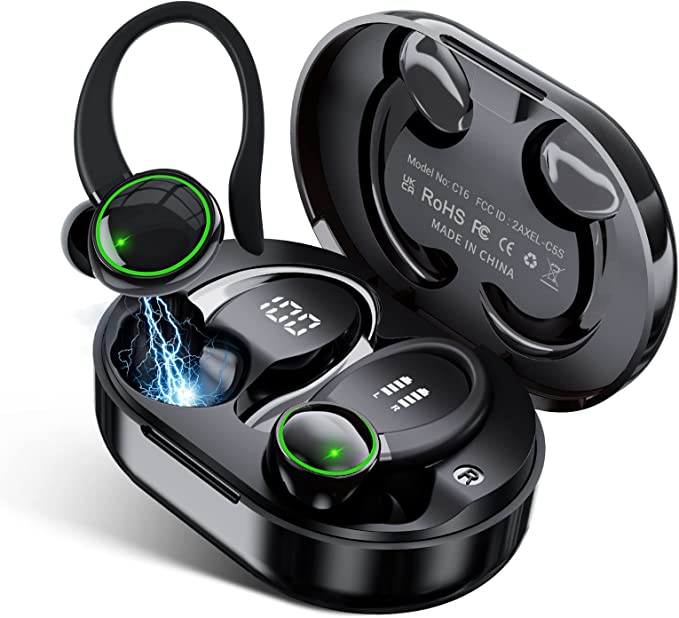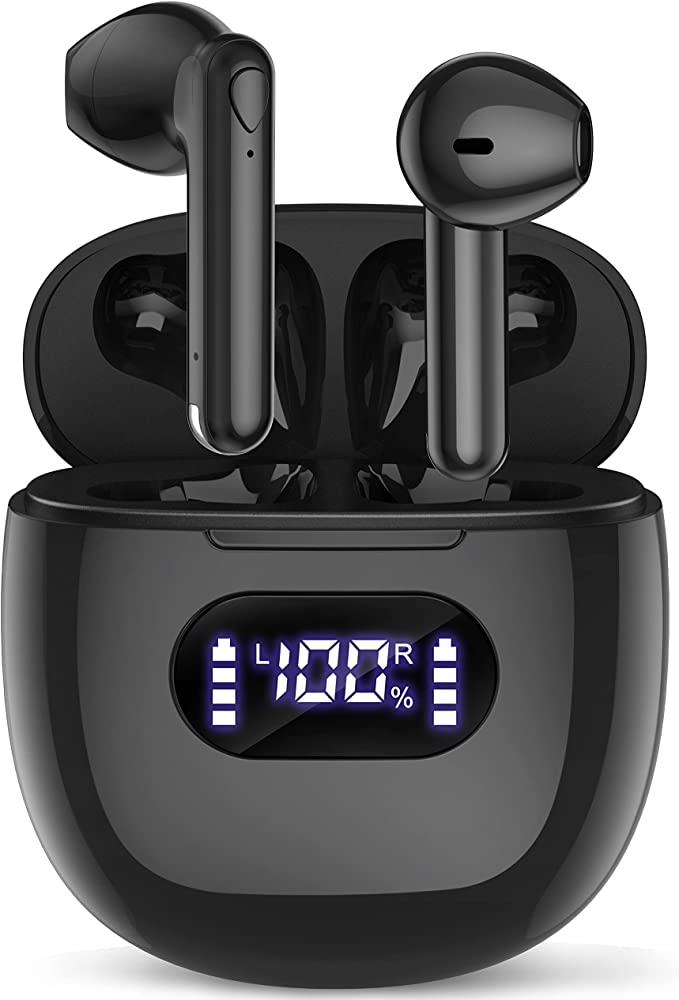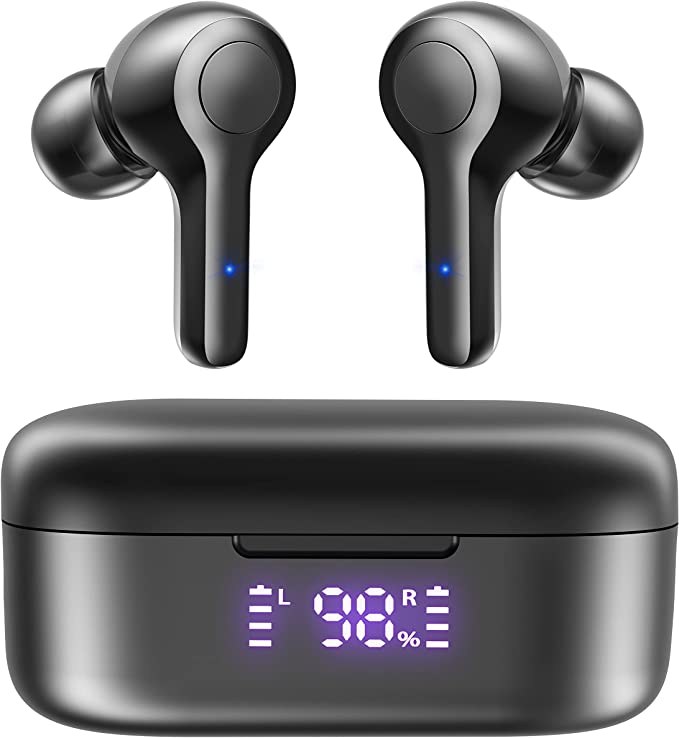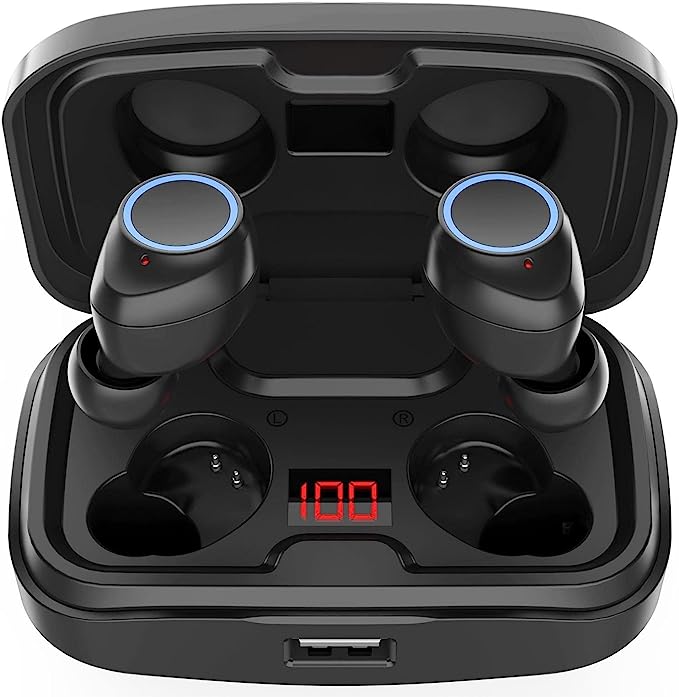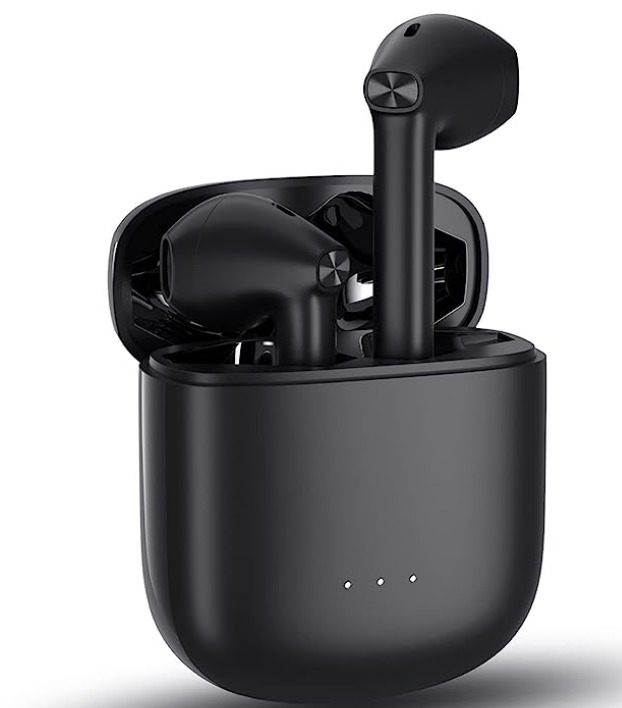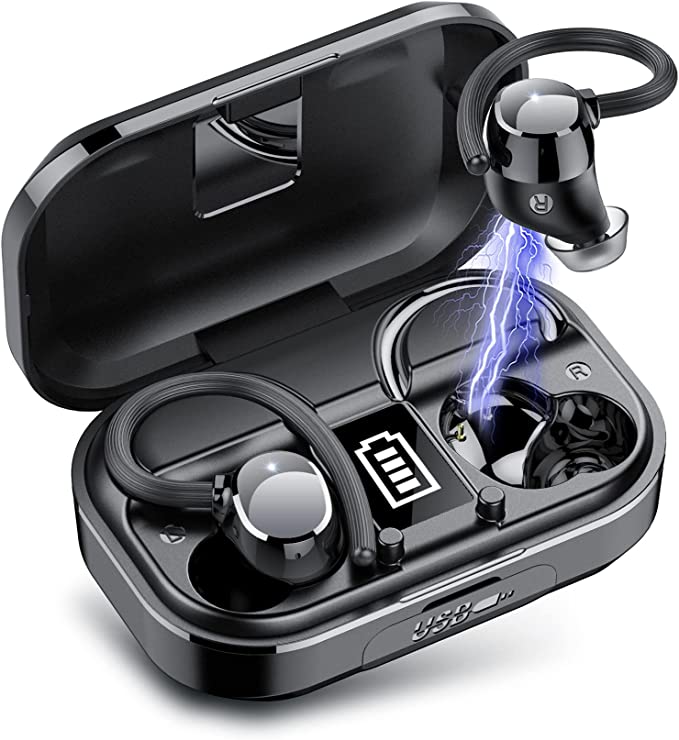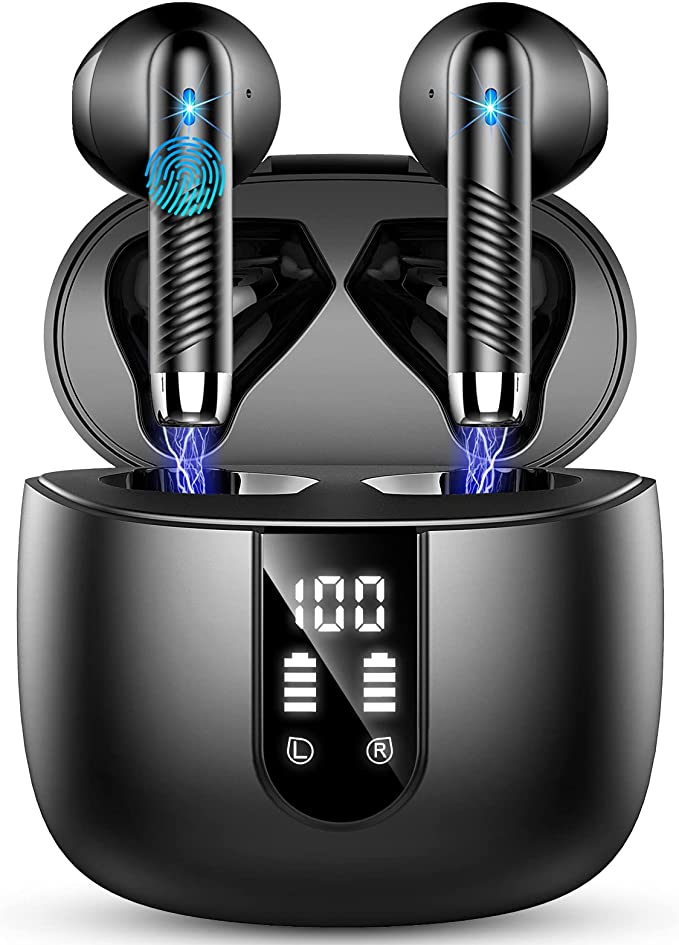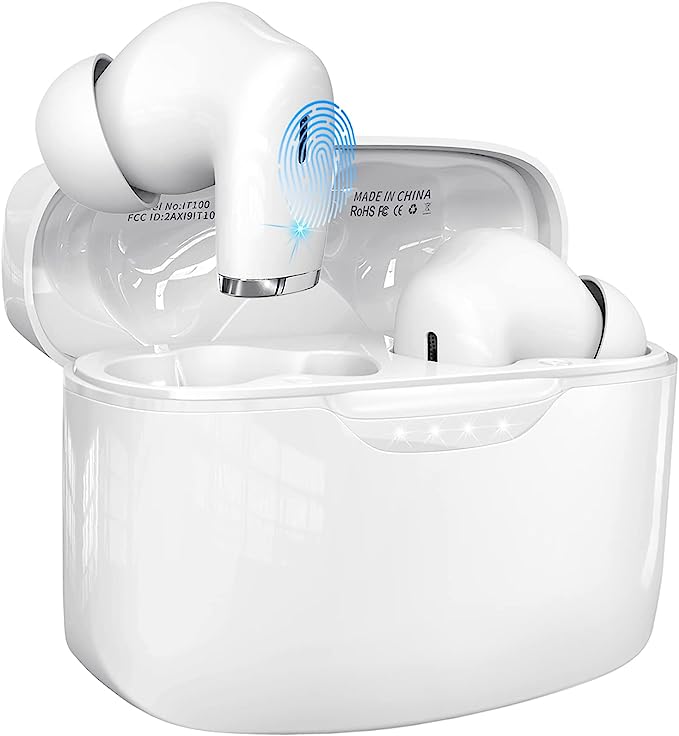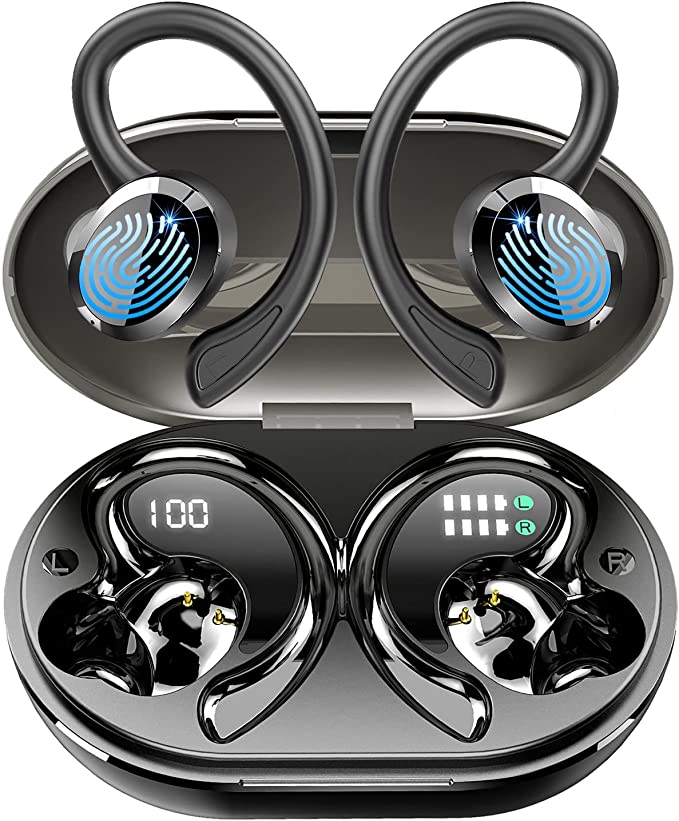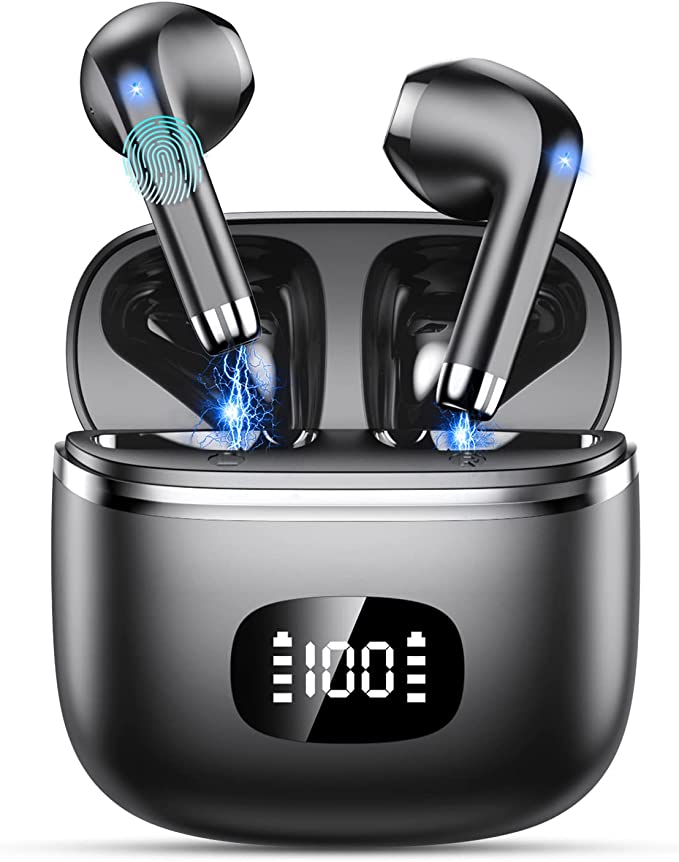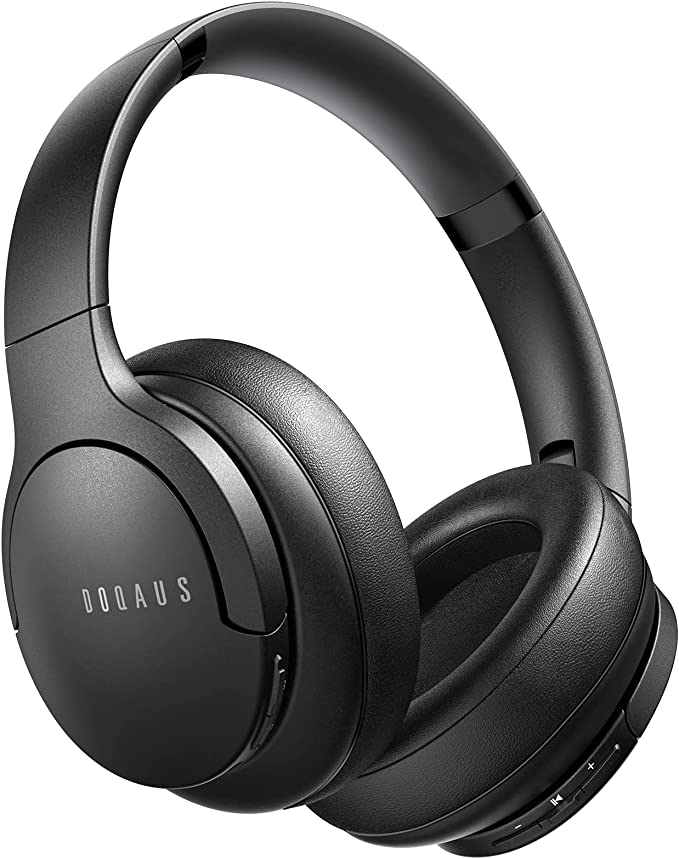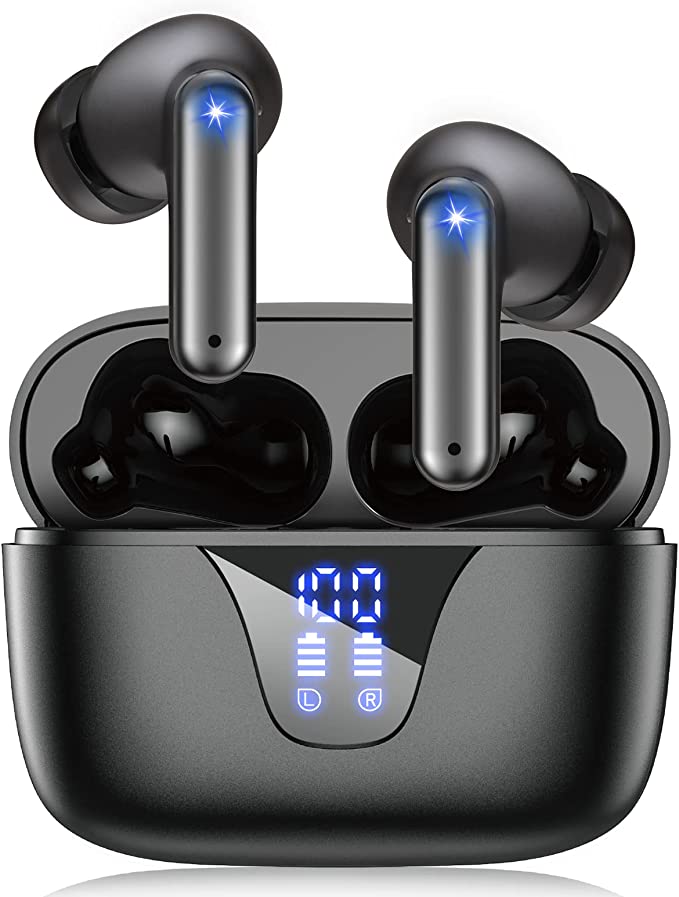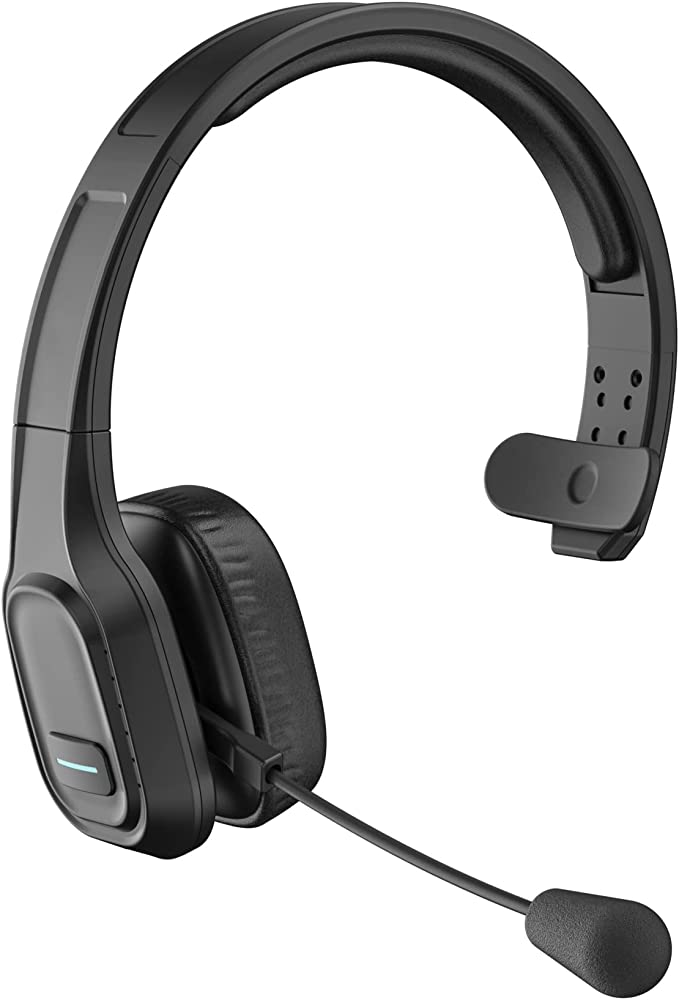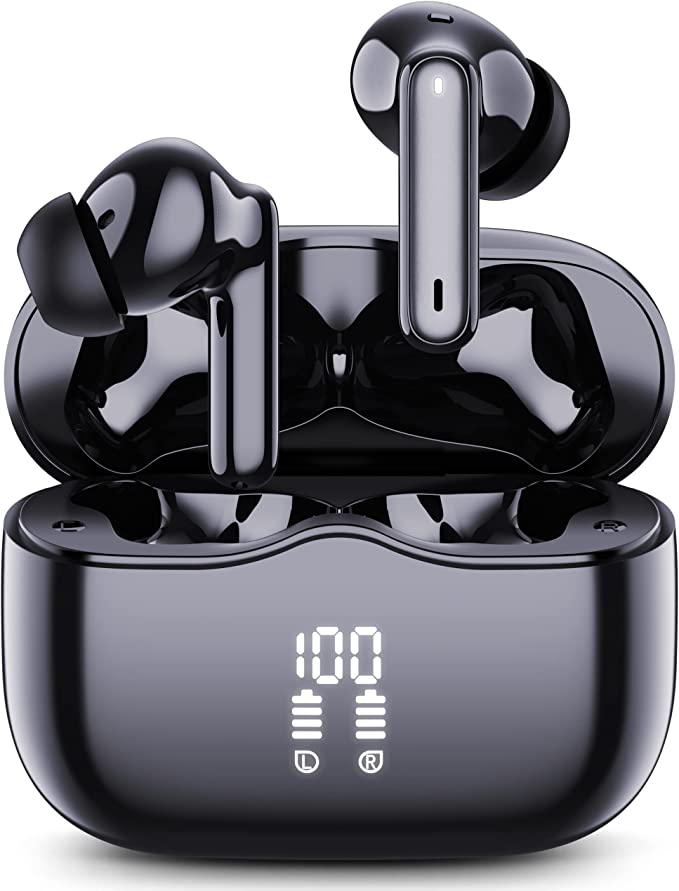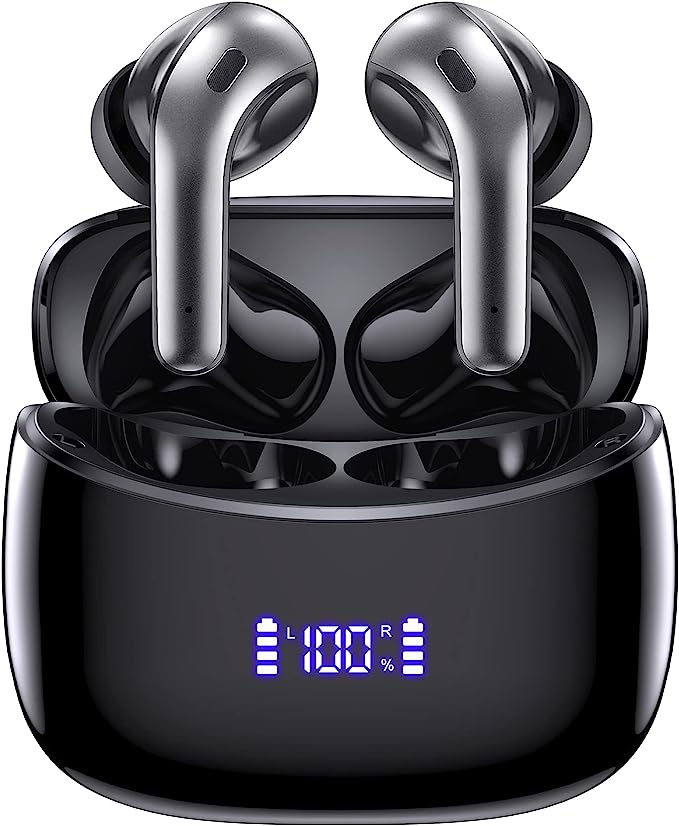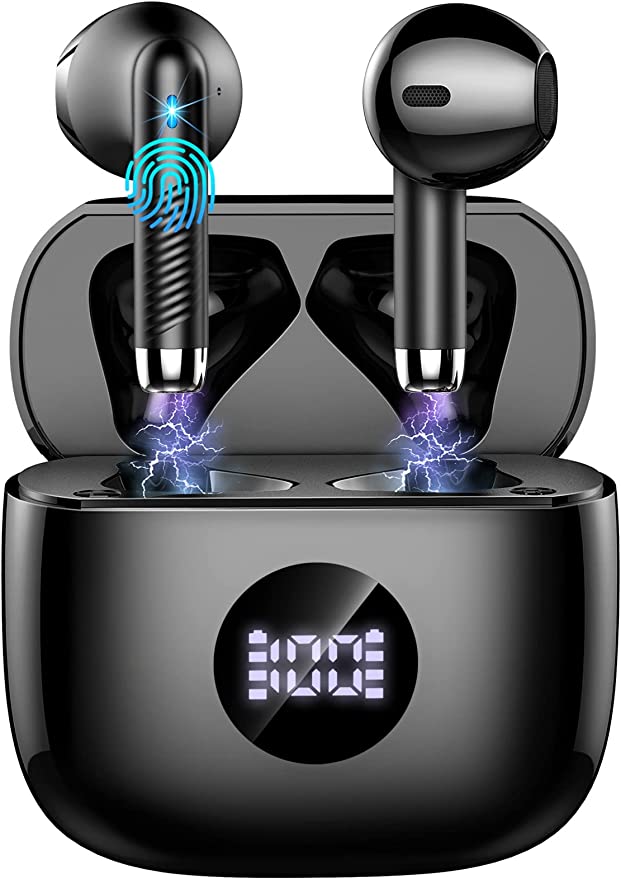TRANYA M10B Wireless Earbuds - Premium Sound with Deep Bass, 32H Playtime
Update on May 30, 2025, 5:18 a.m.
In our pockets and purses, nestled often without a second thought, lie devices of rather astonishing complexity: the wireless earbuds. These tiny companions have, in a remarkably short span, transformed how we consume audio, conduct conversations, and navigate our increasingly connected lives. It’s easy to take for granted the seamless stream of music or the clear voice on the other end of a call, but beneath their sleek exteriors is a universe of scientific principles and intricate engineering. Today, we’re not conducting a review in the typical sense. Instead, consider this an exploration, a peek under the hood of one such device – the TRANYA M10 wireless earbuds – using them as a lens to understand the fascinating science that makes our personal audio experiences possible. My goal is to demystify some of this technology, to share the “hows” and “whys,” making the magic a little more tangible.

The Heartbeat of a Headphone: Decoding the Driver and the Graphene Edge
At the very core of any sound-producing device, from colossal stadium speakers to the diminutive earbud, lies the driver. Think of it as the engine of sound, a miniature marvel whose sole purpose is to vibrate – to move air in precisely controlled ways, creating the pressure waves that our ears interpret as music, voices, or the subtle rustle of leaves in a cinematic soundscape. The TRANYA M10, according to its specifications, houses a 14.2mm dynamic driver in each earbud. In the world of tiny transducers, that’s a respectably large surface area. Generally, a larger driver diaphragm has the potential to move more air, which can be beneficial for producing a fuller sound, particularly in the lower frequencies – the bass and sub-bass that provide richness and depth to music.
But size isn’t the only story here; the material of that vibrating diaphragm is paramount. The M10 employs graphene. If you haven’t encountered graphene, it’s one of the 21st century’s true “wonder materials.” Discovered officially in 2004 (though theorized much earlier), graphene is a single layer of carbon atoms arranged in a two-dimensional honeycomb lattice. Imagine the graphite in your pencil lead, which is made of countless layers of graphene stacked together; now picture isolating just one, atom-thin sheet. This sheet is incredibly lightweight (a square meter would weigh less than a milligram) yet phenomenally strong (over 100 times stronger than steel of the same thickness, were it possible to make such a comparison directly).
Why does this matter for your music? An ideal speaker diaphragm should be infinitely rigid (so it doesn’t deform or resonate in unintended ways, causing distortion) and massless (so it can respond instantaneously to the electrical audio signal). Graphene, while not achieving these theoretical absolutes, gets us closer than many traditional materials. Its incredible stiffness-to-weight ratio means the M10’s diaphragm can accelerate and decelerate with extreme precision, faithfully reproducing the audio signal without “coloring” the sound with its own material resonances. This translates to claims like “exceptional accuracy” and “superior stereo sound.” The rapid response helps in articulating complex musical passages and ensuring clear separation between instruments and vocals, contributing to a “more balanced sound stage.”

Sculpting Your Soundscape: The Two Faces of EQ
Beyond the inherent qualities of the driver, the TRANYA M10 offers a “Dual EQ Setting,” allowing users to switch between a “Normal Mode” and a “Bass Boosted Mode.” Equalization (EQ) is the art and science of altering the frequency balance of an audio signal. Think of it like the tone controls on an old stereo, but often more sophisticated. Our hearing perceives different frequencies as different pitches – low frequencies are bass notes, high frequencies are treble notes, and mid-frequencies cover much of the human voice and the body of many instruments.
“Normal Mode” on the M10 is described as letting you “enjoy a sound with brighter mids and highs,” suggesting a relatively flat or neutral frequency response, which many audiophiles prefer for its faithfulness to the original recording. “Bass Boosted Mode,” conversely, “gives a warmer, deeper bass sound.” This mode selectively amplifies the lower frequencies. The perception of bass is a fascinating area of psychoacoustics; an increase in bass can make music feel more powerful, immersive, or “fun,” especially for genres like electronic dance music, hip-hop, or rock. However, as one user in the provided materials, Desmond Davis, noted, the impact of such a boost can be subjective, stating the M10’s bass boost was “a nice addition, but I must say that the boost is not that great.” This highlights that while EQ offers control, the “ideal” sound remains a deeply personal preference, and the effectiveness of a specific boost depends on the driver’s inherent capabilities and the listener’s taste.

“Can You Hear Me NOW?”: The Science of Saying Goodbye to Muffled Calls
In an age of remote work and constant connectivity, the ability of our earbuds to handle phone calls clearly is no longer a secondary feature; it’s essential. We’ve all been on calls plagued by background noise or a primary speaker who sounds like they’re talking from the bottom of a well. The TRANYA M10 addresses this with a “4 Microphones Design,” aiming for “ultra-clear call voice.”
How can multiple microphones improve call quality? While the specific algorithms used by Tranya aren’t detailed in the provided information, multi-microphone arrays in communication devices often leverage principles like beamforming and noise cancellation. Imagine trying to listen to a single person speaking in a crowded, noisy room (the classic “cocktail party effect”). Your brain does a remarkable job of focusing on that one voice. Multiple microphones can be engineered to do something similar electronically. By comparing the signals received at each microphone, algorithms can identify and amplify sounds coming from the direction of the user’s mouth (the desired voice signal) while simultaneously identifying and attenuating sounds coming from other directions (ambient noise). The claim that the M10 system “clearly picks up your voice and filters the ambient sound” points to such capabilities. This is crucial for calls from a bustling coffee shop, a windy street corner, or even a home office with ambient household sounds. User Desmond Davis found this effective, noting, “No one that I spoke to mentioned hearing background noises or that I sounded too muffled.” This is the practical payoff: being understood without having to shout or repeat yourself.

The Marathon, Not a Sprint: Powering Your Audio Day (and Night)
The liberation of wireless audio comes with a constant companion: the battery icon. The anxiety of running out of power mid-playlist or mid-important-call is a distinctly modern affliction. The TRANYA M10 is designed to mitigate this, offering a claimed “up to 7 hours” of music streaming on a single full charge for the earbuds themselves. The accompanying pocket-sized charging case then extends this “playtime up to 35 hours.” This considerable endurance means that for many users, a full charge of the case and earbuds could last for several days, if not a week, of typical use.
This longevity is a testament to the efficiency of modern Lithium-Ion battery chemistry and the power management integrated into the earbuds’ chipset. But what happens when you do run low and are short on time? The M10 features “Quick charging technology,” which, according to the “About this item” section of the provided information, “ensures 2 hours listening from just 10 minutes charge.” (It’s worth noting a slight discrepancy, as another part of the product description mentions “10 mins’ charge to get 1 hour’ playtime.” We’ll lean on the more prominent claim here.) This rapid boost is achieved by carefully managing the electrical current flowing into the small earbud batteries, allowing them to absorb a significant charge quickly and safely in the initial phase of charging without degrading their long-term health.
The charging case itself, equipped with an 800mAh battery (sufficient to recharge the earbuds about four times), utilizes a “Type-C USB” port. This is the modern, reversible oval-shaped connector that has become a welcome standard across many portable devices, offering convenience and often faster charging speeds for the case itself compared to older micro-USB ports. The case also features LED lighting to indicate its remaining battery life and uses magnetic attraction to guide the earbuds into their charging cradles – small but appreciated design details. One user, “important_name,” did find the case to be “massive,” quipping that if “you shove it in your pocket, people will ask if you are carrying around a turtle.” This is a classic engineering trade-off: a larger case can house a bigger battery for extended overall playtime, but at the cost of pocketability.

Life-Proofing Your Listening: Durability, Control, and Comfort
Our earbuds are often our constant companions, accompanying us from the gym to the office, through sunny days and unexpected downpours. This demands a certain level of resilience. The TRANYA M10 earbuds are rated IPX5 waterproof. The “IP” stands for Ingress Protection, and it’s a standardized rating system. The first digit (replaced by ‘X’ here) refers to protection against solid particles (like dust), which hasn’t been specifically rated for the M10. The second digit, ‘5’ in this case, signifies protection against low-pressure water jets projected by a nozzle (6.3 mm) from any direction. In practical terms, this means the M10 earbuds should comfortably withstand sweat during intense workouts, splashes of water, or being caught in a light rain shower. The product description mentions a “360-degree waterproof and sweat-proof structure” and that “the sealed shell and internal nano-coating can easily prevent the earbuds from sweat and rain,” giving insight into how this protection is achieved.
Beyond durability, how we interact with our devices is crucial. In a world increasingly dominated by touchscreens and capacitive surfaces, the TRANYA M10 makes a distinct choice: Button Control. This might seem like a throwback, but for many users, physical buttons offer tangible advantages. Touch controls, while sleek, can sometimes be finicky, prone to accidental activation when adjusting an earbud, or unresponsive with sweaty fingers. A physical button provides definitive tactile feedback – you know when you’ve pressed it. As user “important_name” enthusiastically put it, “Finally, physical buttons! …the buttons are great, no more accidentally raising the volume 4,000% when I’m trying to fit them in my ear.” This preference highlights a very human factor in design: the need for certainty and reliability in control. The M10’s buttons allow for a range of functions: play/pause, track navigation, volume adjustment, call management, voice assistant activation, and switching EQ modes, all through distinct press patterns.
Finally, comfort is key for any in-ear device. While fit is highly subjective and depends on individual ear anatomy, the M10 are “In Ear” by form factor and come with three pairs of ear tips to help users find a secure and comfortable seal. The claim of “No stress for long-term wearing” suggests an ergonomic design focus.
The Unseen Connection: A Word on Wireless Stability
All this technology relies on a stable, invisible handshake: the Bluetooth connection. The magic of untethered audio is something we quickly grow accustomed to, but a reliable connection is fundamental. The M10 utilizes wireless Bluetooth technology, and user Desmond Davis praised its “lightening fast bluetooth connection,” noting that “Most of the time the earbuds reconnect before I can get them back into my ears.” This rapid and stable pairing is a significant quality-of-life feature, minimizing fuss and maximizing listening time.
Closing Thoughts: The Symphony of Science in Your Ears
Exploring the TRANYA M10, or indeed any modern wireless earbud, is like dissecting a miniature symphony of scientific disciplines. From the material science of graphene revolutionizing driver performance, to the sophisticated signal processing that allows for clear calls in a noisy world; from the electrochemical ingenuity packed into tiny, long-lasting batteries, to the ergonomic considerations of physical controls – it’s a remarkable convergence.
Understanding the technology packed into these everyday devices doesn’t diminish their magic; if anything, it enhances our appreciation for the ingenuity involved. The ongoing quest for the perfect personal audio experience continues to drive innovation, blending cutting-edge science with the deeply human desire for connection, entertainment, and moments of auditory bliss. Each tiny component, each line of code, plays its part in the pocket symphony we carry with us.

